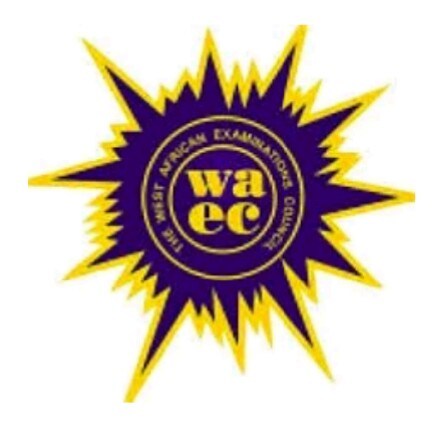If you’re preparing for the West African Examination Council (WAEC) Book Keeping examination, it’s essential to familiarize yourself with the syllabus.
The Book Keeping syllabus serves as a roadmap, outlining the aims, objectives, and topics you need to cover.
This blog post aims to simplify the WAEC Book Keeping syllabus and provide a study guide to help you excel in your exam preparation.
Aims and Objectives:
The primary objective of the Book Keeping examination is to assess your basic knowledge of business activities and understanding of financial systems.
By studying the syllabus and mastering the concepts, you will be equipped with the necessary skills to start a business and lay a solid foundation for further studies in the field.
Exam Scheme:
The Book Keeping examination consists of two papers:
Paper 1 and Paper 2. Paper 1 is a multiple-choice section, containing forty questions to be completed in 50 minutes for a total of 40 marks. Paper 2 comprises two sections: Section A covers the Theory of Book-Keeping, with four questions from which you need to answer two for 20 marks. Section B focuses on the Practice of Book-Keeping, containing five questions, of which you must answer three, worth 60 marks. Paper 2 has a duration of 2 hours.
Book Keeping Syllabus:
-
Introduction to Book Keeping:
- Understand the meaning, definition, history, nature, importance, and functions of Book Keeping.
- Explore career opportunities and the beneficiaries of bookkeeping.
- Identify the qualities and values of bookkeepers.
- Differentiate between assets and liabilities, including their definition, classification, and examples.
- Comprehend the meaning and types of business transactions and the parties involved.
-
Concepts and Conventions:
- Define and distinguish between concepts and conventions in bookkeeping.
-
Books of Original Entry:
- Understand the purpose, types, format, uses, and preparation of Books of Original Entry.
-
Ledger and Principles of Double Entry:
- Define the ledger and its classification, format, uses, and preparation.
- Grasp the principles of double entry, including its meaning, history, rules, and making double entries.
-
Cash Book:
- Explore the meaning, purpose, description, and differences between various types of cash books, such as single column, double column, three column, and petty cash book.
-
Bank Reconciliation Statement:
- Understand the meaning and purpose of bank reconciliation statements.
- Familiarize yourself with relevant terminologies and banking documents.
- Identify the causes of differences between cash book and bank statement balances.
-
Trial Balance and Errors:
- Comprehend the meaning and functions of trial balance.
- Learn the rules and preparation of trial balance.
- Identify the types and classification of errors, their correction, and the preparation of a Suspense Account.
-
Financial Statements of Sole Proprietorship:
- Learn to prepare a simple Trading Account, including methods of valuing stock (FIFO and LIFO).
- Understand the purpose, format, and preparation of Profit and Loss Account.
- Grasp the meaning, content, format, and preparation of a simple balance sheet.
-
Adjustments to Financial Statements:
- Explore adjustments for prepayments, accruals, depreciation, bad and doubtful debts.
- Understand the meaning and methods of depreciation (straight line and reducing balance).
-
Control Accounts:
- Define and prepare Sales Ledger and Purchases Ledger Control Accounts.
-
Single Entry and Incomplete Records:
- Understand the meaning and limitations of single entry and prepare final accounts from incomplete records.
-
Accounts of Not-For-Profit Making Organizations:
- Grasp the purpose, content, and preparation of Receipts and Payments Accounts and Income and Expenditure Account.
-
Manufacturing Accounts:
- Learn the meaning, purpose, and terminologies of manufacturing accounts.
- Prepare Manufacturing, Trading, Profit and Loss Accounts.
-
Partnership Accounts:
- Understand the meaning and terms related to partnership accounts, including partnership deed, drawings, interest on capital, interest on drawings.
- Prepare Capital and Current Accounts, Profit and Loss and Appropriation Account, and Balance Sheet.
- Learn about the admission of new partners and Goodwill Account.
-
Joint Venture Accounts:
- Differentiate between joint venture and partnership accounts.
-
Departmental and Branch Accounts:
- Understand the importance and differences between departmental and branch accounts.
- Prepare departmental and simple branch accounts.
-
Introduction to Company Accounts:
- Learn about the formation and terminologies of company accounts.
- Prepare simple financial statements.
-
Interpretation of Accounts:
- Explore the purpose and computation of ratios, such as net profit margin, stock turnover, quick ratio, acid test ratio, gross profit margin, and return on capital employed.
-
Purchase of Business:
- Understand the reasons, terminologies, and preparation of accounts related to purchasing and selling a business.
-
Consignment Accounts:
- Familiarize yourself with the terminologies and preparation of simple Consignment Accounts.
-
Hire Purchase:
- Learn the meaning and preparation of accounts in the seller’s and hirer’s books.
-
Contract Accounts:
- Understand the meaning, purpose, and terminologies of contract accounts.
- Prepare Contract Accounts.
-
Cooperative Accounts:
- Understand the meaning and objectives of cooperative societies.
Conclusion
Mastering the Book Keeping syllabus is crucial for excelling in the WAEC examination.
By diligently studying the topics outlined in the syllabus, utilizing recommended textbooks, and practicing past questions, you can lay a strong foundation for your understanding of bookkeeping principles and their application in modern business activities.
Good luck with your exam preparation!






